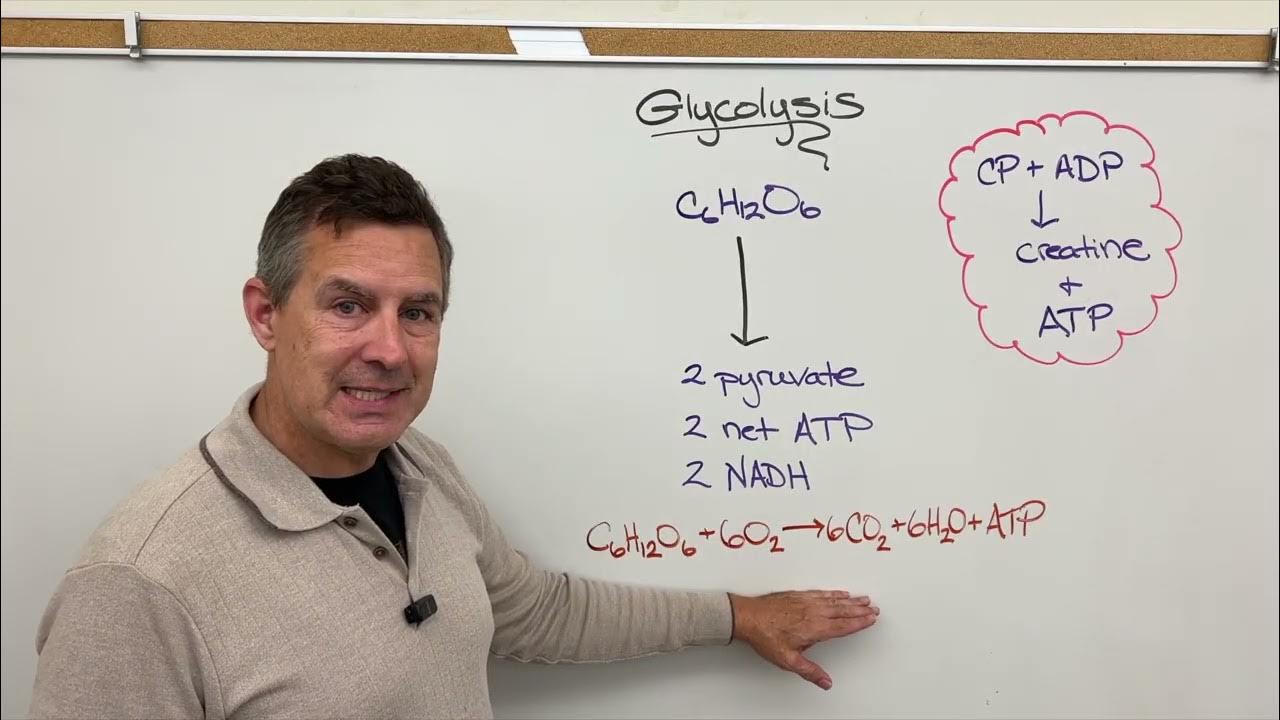Cholesterol Synthesis | How Our Bodies Make Cholesterol
Summary
TLDRThis video provides an in-depth explanation of cholesterol synthesis, its regulation, and storage. It covers the role of cholesterol in the body, including its importance for vitamin D, steroid production, and membrane stability. The process of cholesterol synthesis is detailed, focusing on key enzymes like HMG-CoA reductase, the rate-limiting step, and how it is regulated by hormones like insulin and glucagon. The video also discusses the storage of cholesterol as cholesterol esters and the action of drugs like statins, which target these processes to manage cholesterol levels. A detailed yet accessible guide to understanding cholesterol metabolism.
Takeaways
- 😀 Cholesterol is essential for the body, playing key roles in vitamin D production, steroid hormone synthesis, bile salt production, and membrane stability.
- 😀 Cholesterol is a hydrophobic lipid with a structure consisting of four non-aromatic rings, a side chain, and a hydroxyl group.
- 😀 The liver, adrenal glands, intestines, and gonads are the primary organs involved in cholesterol production due to their role in steroid synthesis.
- 😀 The synthesis of cholesterol starts with Acetyl-CoA and Acetoacetyl-CoA, which are catalyzed by HMG-CoA synthase to form HMG-CoA.
- 😀 HMG-CoA reductase is the rate-limiting enzyme in cholesterol synthesis and is regulated by insulin (activates) and glucagon (inhibits).
- 😀 Statins, a class of pharmaceutical drugs, inhibit HMG-CoA reductase to lower cholesterol levels in the body.
- 😀 The mevalonate pathway leads to the production of isopentenyl pyrophosphate, which is further processed to form squalene, a precursor to cholesterol.
- 😀 Squalene undergoes multiple enzyme-catalyzed steps, including circularization, to form lanosterol, which is then converted into cholesterol.
- 😀 Cholesterol regulates its own synthesis through a feedback mechanism where excess cholesterol inhibits the activation of the transcription factor SREBP via SCAP.
- 😀 Cholesterol is stored as cholesteryl ester, formed by the enzyme ACAT inside cells, and by LCAT in the bloodstream, using phosphatidylcholine.
- 😀 Cholesteryl esters can be converted back to active cholesterol by the enzyme cholesteryl ester hydrolase.
Q & A
What is the primary function of cholesterol in the body?
-Cholesterol is essential for producing vitamin D, steroid hormones, and bile salts. It also contributes to membrane stability in cells.
What are the key structural features of cholesterol?
-Cholesterol has four non-aromatic carbon rings, a carbon double bond, a side chain, and a hydroxyl group. These features contribute to its hydrophobic nature.
How is cholesterol synthesized in the body?
-Cholesterol is synthesized starting from acetyl-CoA, which undergoes a series of reactions catalyzed by enzymes, eventually producing cholesterol through a complex pathway involving intermediates like mevalonate, isopentenyl pyrophosphate, squalene, and lanosterol.
What is the rate-limiting enzyme in cholesterol synthesis?
-The rate-limiting enzyme in cholesterol synthesis is HMG-CoA reductase. It catalyzes the conversion of HMG-CoA to mevalonic acid and is heavily regulated by hormones such as glucagon, insulin, and AMP.
How is HMG-CoA reductase regulated?
-HMG-CoA reductase is regulated by glucagon and AMP, which inhibit it, and by insulin, which activates it. Its synthesis is also regulated by the transcription factor SREBP (Steroid Response Element Binding Protein).
What role do statins play in cholesterol regulation?
-Statins are pharmaceutical drugs that inhibit HMG-CoA reductase, thereby reducing cholesterol synthesis in the body. They are commonly used to treat high cholesterol levels and reduce the risk of cardiovascular diseases.
What is the mevalonate pathway, and how does it contribute to cholesterol synthesis?
-The mevalonate pathway involves the conversion of mevalonic acid to isopentenyl pyrophosphate, which eventually leads to the production of squalene, lanosterol, and ultimately cholesterol. This pathway is essential for synthesizing the building blocks of cholesterol.
How is cholesterol stored in the body?
-Cholesterol is stored as cholesterol ester in cells. This occurs when the enzyme ACAT (Acyl-CoA cholesterol acyltransferase) adds a fatty acid to cholesterol, making it more stable and easier to store.
What happens to cholesterol ester when it is needed by the body?
-When cholesterol ester is needed, it is converted back to cholesterol by the enzyme cholesteryl ester hydrolase, which removes the fatty acid from the ester, releasing active cholesterol.
What is the significance of cholesterol acting as a feedback regulator in its own synthesis?
-Cholesterol regulates its own synthesis by inhibiting the enzyme HMG-CoA reductase through a feedback loop. When cholesterol levels are high, it binds to SCAP, preventing the activation of SREBP, which normally increases the production of HMG-CoA reductase.
Outlines

هذا القسم متوفر فقط للمشتركين. يرجى الترقية للوصول إلى هذه الميزة.
قم بالترقية الآنMindmap

هذا القسم متوفر فقط للمشتركين. يرجى الترقية للوصول إلى هذه الميزة.
قم بالترقية الآنKeywords

هذا القسم متوفر فقط للمشتركين. يرجى الترقية للوصول إلى هذه الميزة.
قم بالترقية الآنHighlights

هذا القسم متوفر فقط للمشتركين. يرجى الترقية للوصول إلى هذه الميزة.
قم بالترقية الآنTranscripts

هذا القسم متوفر فقط للمشتركين. يرجى الترقية للوصول إلى هذه الميزة.
قم بالترقية الآن5.0 / 5 (0 votes)






